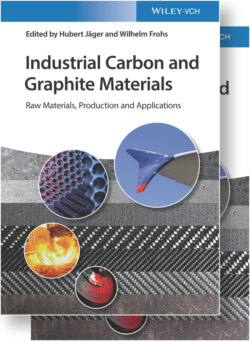Читать книгу Industrial Carbon and Graphite Materials - Группа авторов - Страница 294
6.1.2.6.2 Calcined Petroleum Coke
ОглавлениеAll hydrocarbons in green coke are eliminated by calcination. The remaining hydrogen content is <0.1%. Therefore, no polycyclic aromatics are traceable. The content of S, N, and metals is virtually unchanged. With water, only part of the salt content of the cutting water can be elutriated. No classification and labeling is required.
Due to the dryness of the calcinate, irritation of eyes and throat by the dust is possible. The general boundary value at work (maximum 6 mg/m3 for fine dust concentration) is to be complied with.
Calcined coke is usually stored in closed silos or bins to keep the material dry. To reduce dust formation, the calcinate is sucked off during transport and loading and the dust held back by filter stations. Sprinkling the calcinate with residue parts of 0.2–0.4 wt% (old process) or an aqueous emulsion of dust binder prevents environmental problems from dust. The dust forming factor (“R+D‐Carbon” method) must be <0.02 wt%. The combustion and explosive behavior of calcined coke presents no problem:
| Combustion behavior | BZ1 (no combustion) |
| Glow temperature | No glowing up to 450 °C |
| Ignition temperature | No ignition up to 850 °C |
| Dust explosive | No |
Since no combustible dust–air mixture is formed, calcined dust is a material that has no security zone classification (zone 11) and does not come under the risk management regulation.
